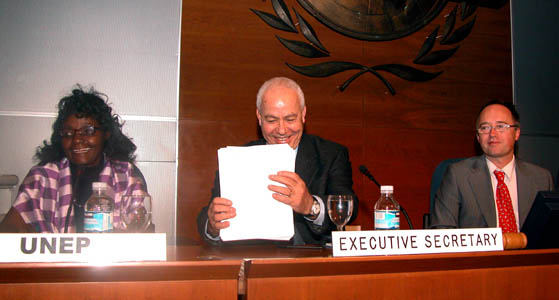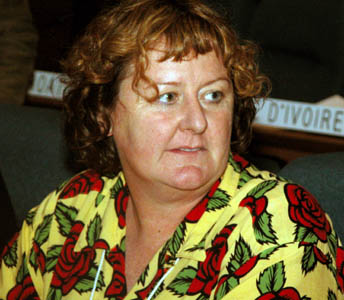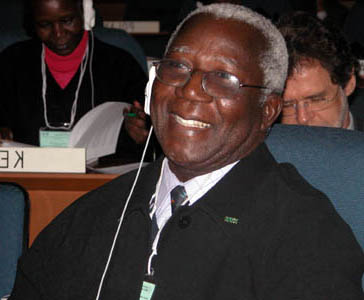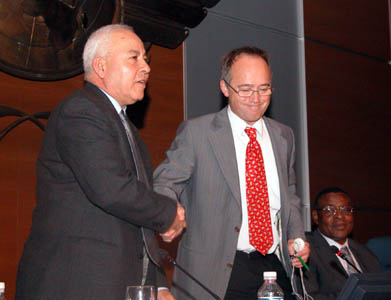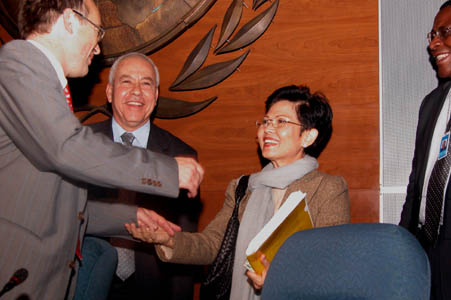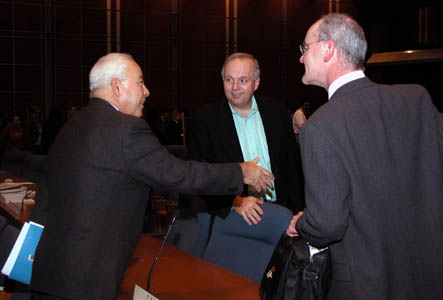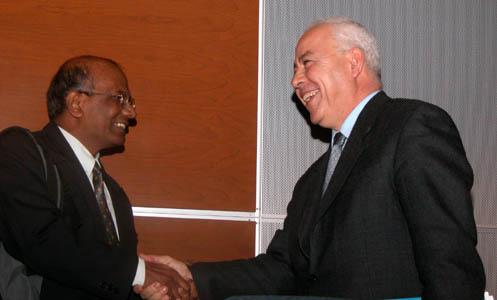Working Group I:
|
|
|
INVASIVE ALIEN SPECIES:
|
|
|
On
Friday morning, WG-I addressed the remaining unresolved issues,
including: additional funding for capacity building; cooperation with
the UNFCCC; and a proposal by
Australia
to note the outstanding procedural and substantive issues related to
Decision VI/23 (IAS).
|
|
|
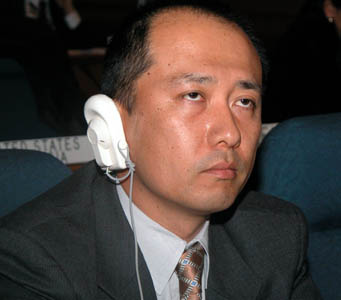
|
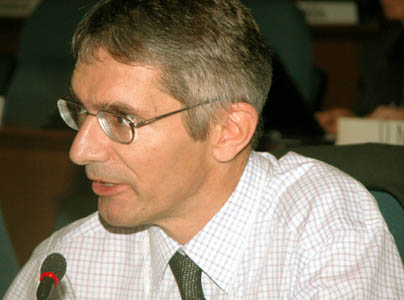
|
|
On
funding, based on a compromise proposal presented by JAPAN
and CAMEROON, delegates agreed to recommend that COP consider the need for
the provision of additional funding by the financial mechanism
for developing countries to prevent or minimize the risk of
IAS.
Above photo: Wataru Suzuki (Japan)
|
The
UK presented compromise text on the UNFCCC, and delegates
agreed to request the Executive Secretary to communicate the
recommendations on IAS to the UNFCCC Secretariat, to
facilitate their being taken into account, as appropriate, by
UNFCCC Parties in framing and implementing the UNFCCC
decisions.
Above photo: Roy Hathaway (UK)
|
|
|
|
Working Group II:
|
|
|
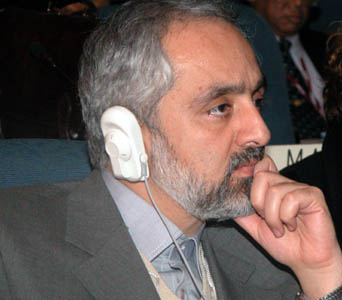
|
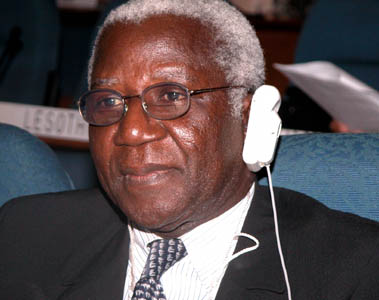
|
|
|
REFINEMENT
OF THE FRAMEWORK OF THE GOALS AND TARGETS:
Contact Group Chair Asghar Mohammadi Fazel (Iran) reported on the outcomes of the discussions and
submitted the draft recommendation for adoption. The
revised draft recommendation was approved without
amendment.
|
VISION,
MISSION AND GOALS FOR THE WORK PROGRAMMES ON DRY AND
SUB-HUMID LANDS, MOUNTAIN AND FOREST BIODIVERSITY:
Contact Group Chair Alfred Oteng-Yeboah (Ghana)
presented the revised draft recommendation, noting that a
narrow compromise had been reached in the contact group
and urging delegates not to reopen the document.
|
|
|
|
MARINE
AND COASTAL BIODIVERSITY:
|
|
|

|
MEXICO reported on the outcome of the drafting group and
presented group’s compromise text, in which the SBSTTA
recommends that COP: be aware of a preliminary range of
options that may be utilized for the protection of deep
seabed genetic resources beyond national jurisdiction, inter
alia, the establishment of marine protected areas, and
prohibition of detrimental and destructive practices in
vulnerable areas; emphasizes the need for further work in
developing these and other options, in particular within
the UN framework; and recognizes that the UNCLOS regulates
activities in the marine areas beyond national
jurisdiction.
Left photo L-R: Hesiquio Benitez-Diaz and Mariana
Bellot Rojas (Mexico) |
|
|
CLOSING PLENARY :
|
|
|
|
|
|
STATEMENTS:
|
|
|
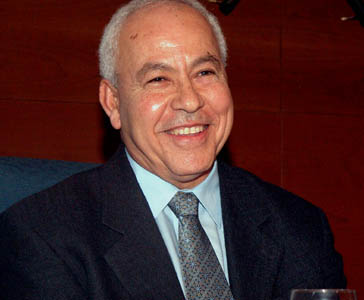
|
In his
closing remarks, Hamdallah Zedan, CBD Executive
Secretary, highlighted intersessional preparatory
activities for COP-8. He said the informal joint meeting
between SBSTTA and its UNFCCC counterpart has enhanced the
understanding of environmental problems facing the world
today. He thanked host governments for the forthcoming CBD
meetings. |
|
|
|
|
|
|
|

|
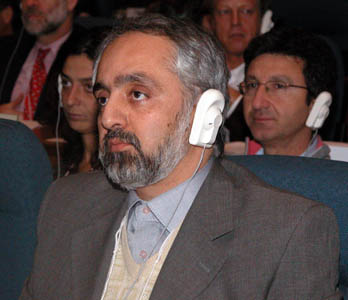
|
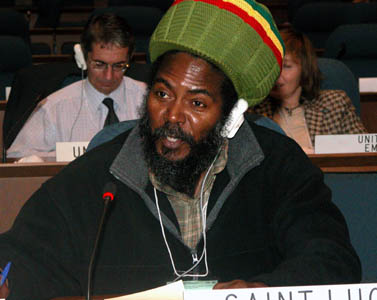
|
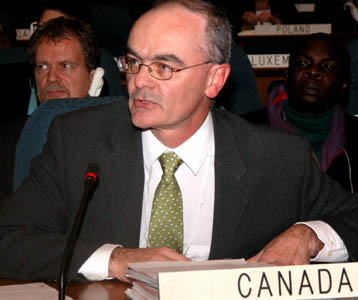
|
|
TANZANIA, on behalf of the African Group, paid tribute to Zedan
for his dedication to CBD. He said that
Africa
welcomed the new CBD Executive Secretary Ahmed Djoghlaf
and pledged the region’s full support to his work. He
called for funding for the second PA working group meeting
to be convened before COP-8 and global solidarity on
actions to achieve the 2010 target.
|
Above photo: Rawson Piniel Yonazi (Tanzania) |
|
IRAN, on behalf of the
Asia
and the Pacific region, stressed the need for cooperation
between developed and developing countries.
|
Above photo: Asghar Mohammadi Fazel (Iran) |
|
ST.
LUCIA, on behalf of GRULAC, also thanked Zedan for
his contribution to the Convention and also welcomed the
incoming Executive Secretary Ahmed Djoghlaf.
|
Above photo: Michael Andrew (St. Lucia) |
|
CANADA presented a
token of appreciation to Zedan, thanking his
leadership in advancing the CBD.
Above photo: Robert McLean (Canada)
|
|
|
|
|
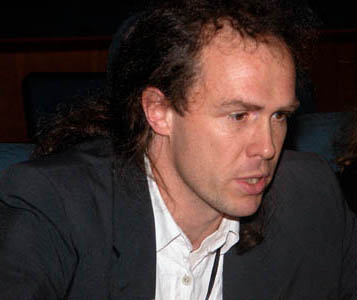
|
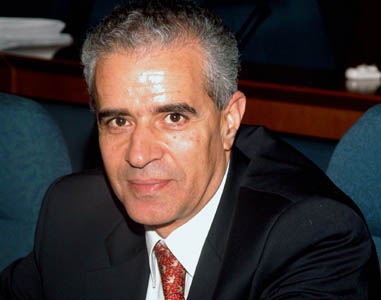
|
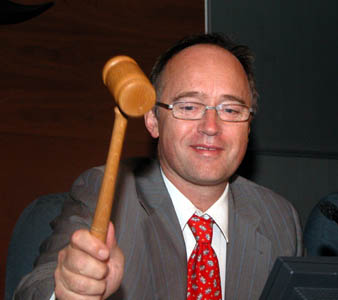 |
|
|
|
|
GREENPEACE, on behalf of the NGOs, called for more actions at
international and national level to reduce biodiversity loss.
Above photo: Martin Kaiser (Greenpeace) |
Above photo: Ahmed Djoghlaf, Assistant Executive Director
of UNEP, will assume the Office of the CBD Executive
Secretary beginning January 2006. |
Chair Prip
declared the meeting closed at 8:32 pm.
|
|
|
|
|
|
|
|
|
|
|
|
|
|
|
|
